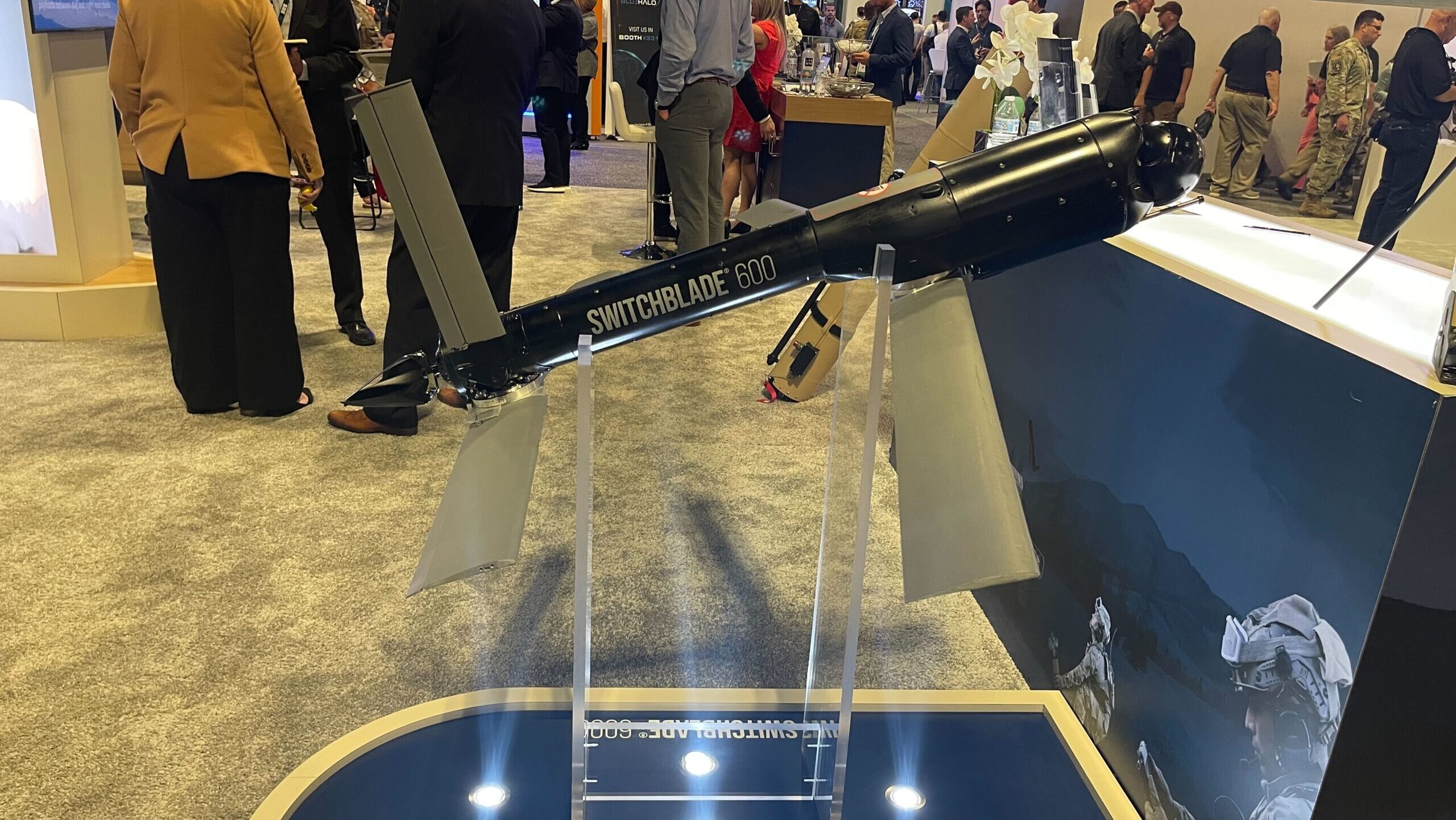Following Replicator win, AeroVironment sees strong demand for Switchblade, loitering munitions

AeroVironment’s Switchblade 600 drone on display at the SOF Week conference in Tampa. (Michael Marrow/Breaking Defense)
SOF WEEK 2024 — On the heels of the Pentagon’s announcement that the company’s Switchblade weapon was picked for the DoD’s Replicator initiative, manufacturer AeroVironment expects that it will have to ramp up production of loitering munitions in the years ahead — and that its offerings will evolve to meet new mission sets.
“We have already expanded production ahead of Replicator, and irrespective of Replicator, because we know where this is going,” AeroVironment CEO Wahid Nawabi told Breaking Defense in a Wednesday interview at the SOF Week conference here in Tampa. “We are actually increasing that capacity even more because we believe there’s even more demand in the future for loitering munitions.”
Describing the company’s loitering munitions — otherwise known as suicide drones — as the “poster child” of Replicator, Nawabi pointed to the extensive deployment of their use in Ukraine. “Eight or 10” of the company’s weapons are deployed in the conflict, Nawabi said, claiming they have a “very high success rate. And that’s why they want more of them.”
Still, the conflict has been something of a learning experience. Intense Russian electronic warfare continues to knock thousands of Ukrainian drones out of the sky, prompting companies like AeroVironment to adapt their technology to circumvent new threats.
“We’ve learned a lot from Ukraine, and we’ve actually made a lot of improvements to our products since the beginning of the conflict, and in fact, reacting to some of the challenges that Ukrainians are facing with our systems,” Nawabi said. An example he pointed to is a new autonomy retrofit kit that can integrate with the company’s Puma drone, which he said uses terrain mapping to find its way to a target if GPS is unavailable. The tech is being used in Ukraine, he said, though he declined to say whether similar tech has been incorporated on the Switchblade.
According to Nawabi, AeroVironment’s goal is “end-to-end complete mission autonomy” for weapon systems that can operate in swarms — a “holy grail” of capability that can function in a contested environment and doesn’t require an operator in the loop to execute. “So our vision is to build our technology to that level of capability,” he said. “Whether it’s allowed to be used, those are all rules of engagement within the military that we don’t have a say in.”
Looking ahead, Nawabi said he expects the Switchblade to integrate with new platforms and be characterized by different warhead sizes, ranges and possibly other roles.
“You could see Switchblade going into armored vehicles, Humvees, JLTVs [Joint Light Tactical Vehicles], armored trucks, tanks, airplanes and helicopters,” he said, later describing a scenario where a Switchblade acts as an anti-radiation weapon to destroy enemy radar.
“We’re just at the beginning of the cycle,” he said.